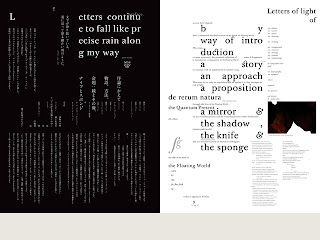I've been asked as part of a university project to compete in a poster competition for the National Student Survey. The brief demands a promotional poster to encourage students to participate in the survey. We've been given the following straplines to work with, or if we choose make our own.
• Have your say
• Be heard
• Your opinion matters
• Speak up
The following are poster designs of previous competition entries which were shortlisted. I've seen some innovative designs and also some bad one's.
Quite a simple but effective design. The illustration seems fitting, especially considering the target audience.
To me, this design feels far too generic. It also seems the obvious answer and typical of a student poster. There's also not a lot of cohesion because for me there hasn't been to much consideration for layout. Despite this, elevating the typography for the word "up" is a nice feature.
This image was selected as the winner in 2010. I can see why it might of been a popular choice, however I don't like the design. There's a lot of explosive energy and exitement within the poster (typical of student life perhaps) therefore it'd most probably appeal to the vast majority of students.
Below is the basis of the design I want to incorporate into the poster. I chose the strap line "Make your mark" and the concept of the design is using a finger print to represent the word "mark". However the fingerprint also offers alternative meanings. Because the survey is very peronal, I wanted to represent this through a fingerprint as everyone has different fingerprint marks but more more importantly different opinions.
I achieved the fingerprint by using acrylic paint on my own finger. I then scanned it at a high resolution into Adobe Illustrator and live traced the image. The idea behind this was to turn it into vector format instead of pixels so the image wouldn't distort itself when enlarged.
The is a mockup poster design which I scrapped because the hand doesn't offer anything to the image. I realized I already held the concept within the fingerprint. Although I am quite happy with the visual look of the hand, which I wrapped in clingfilm and scanned, however it is irrelevent. I highlighted the word your with I black box because for me it holds importance to the viewer. Another element I incorporated into the design was the finger print replacing the letter "O" in "Your". This draws the viewers attention. I also believe I need to utilize the space better. theis a lot of negative space which doesn't look very pleasing.
Here's a developed version of my poster. I scrapped the image of the hand and focused on the concept of the fingermark. I think the combination of yellow, black and white complement eachother very well. There's a lot of open space, however the boldness of the boxes and type draw the viewers to the strapline. I chose to use yellow to communicate with my target audience, it represents a youthful, dynamic approach. The poster also proves efficient as I've incorporated a grid system, it's quite basic but adds to a cohesive design.
Final image.
Using colour also aloud me to experiment quite freely with a range of different colours. It also allows people to completely customize it to their own taste.




















































